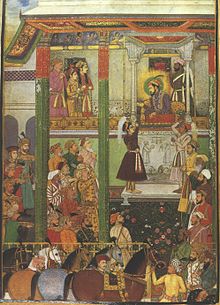 | |
| Author | Inayat Khan |
|---|---|
| Country | Mughal Empire (India) |
| Language | Persian |
| Genre | Biography |
| Set in | 17th century Mughal India |
| Text | Shahjahannama at Wikisource |
The Shahjahannama (Persian: شاه جهان نما; lit. 'Chronicle of Shah Jahan') is a genre of works written about the Mughal Emperor Shah Jahan. Padshahnama is a term for lavishly illuminated versions.
A significant work in this genre was written by the historian Inayat Khan in the 17th century.[1][2][3] The first complete English translation from Persian appeared in the 19th century by A. R. Fuller.[4]